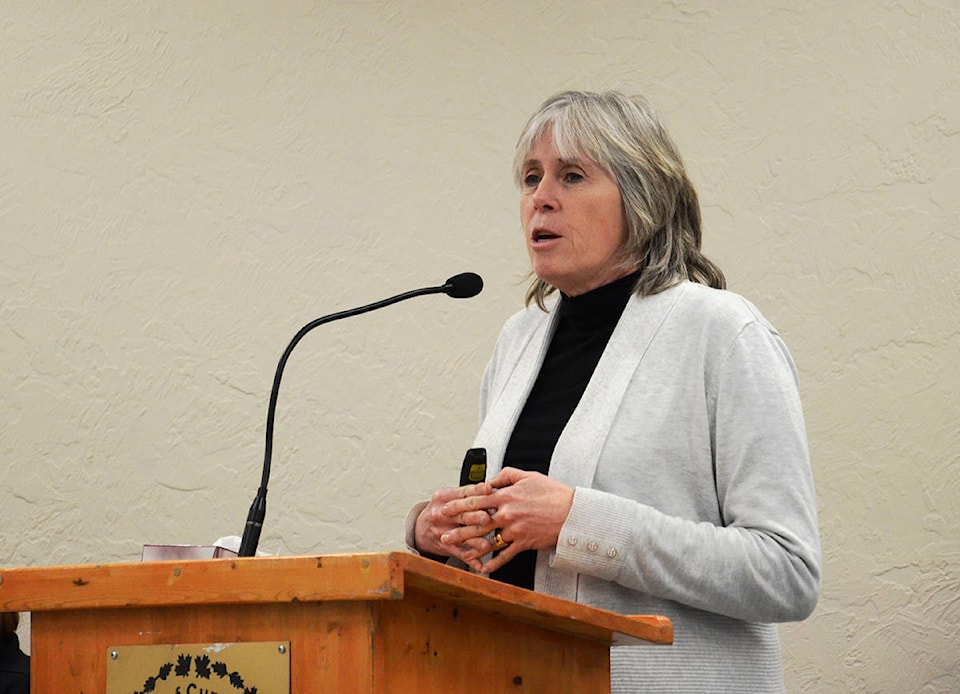The North Island region’s medical health officer understands concerned parents who want to keep their kids home in September due to COVID-19.
Dr. Charmaine Enns, however, wants them to get the best information to make their decision instead of making a choice out of fear.
On Aug. 25, she met online with parents through the Comox Valley District Parent Advisory Council to listen and discuss issues surrounding having students return to classrooms.
“It would be impossible for parents not to have concerns,” she told the Comox Valley Record. “I really appreciate their questions.”
The discussion also included school board representatives and MLA Ronna-Rae Leonard. The previous week school district trustees met with senior staff to address restart plans for September classes.
RELATED STORY: Comox Valley school district looks at student cohorts and more for restart
Enns realizes that when it comes to the pandemic, there is an enormous amount of information – and misinformation –available for people now, and she recommends people visit the BC Centre for Disease Control website for the most up-to-date and accurate information into a public health situation that is multi-faceted, complex and constantly changing.
As B.C. has moved into phase three re-opening, it has been expected for many to feel anxiety, especially with a recent hike in coronavirus numbers, though Enns points out these cases have been associated with social clusters, not community-wide transmission.
“It’s still really low numbers when you look at our whole population,” she added.
Enns emphasized it is important not to focus on the “singular issue” of a positive case but in the balance of other issues such as outcomes like hospitalization rates and recovery rates. For the province as a whole, as of Aug. 27, there were 22 hospitalizations, with 19 in the Fraser Health area and none on the Island. This compares with a peak day of 149 in B.C. in the spring.
“We’re significantly lower than back in March-April,” she said.
A positive test shows the system is working, and she cites the outbreak on Cormorant Island. Thirty cases affected the small community of Alert Bay, but because of public health measures, the situation cleared up in three weeks.
“Those interventions worked,” she said.
RELATED STORY: Alert Bay resident carves tribute to his community kicking COVID-19’s butt
To allay fears, she points out that although the numbers might be rising in B.C., this has not happened in a large way on the Island. Another key point is a routinely low rate of hospitalization, with most people isolating and recovering at home. For health officials and the general public alike, there have been lessons learned along the way since the outbreak of the pandemic.
“This is not February and March. We’re seven, eight months smarter than we were when this started,” she said. “We can’t get stuck on the number. We have to consider the impact of that number.”
Another consideration is that potential contact does not guarantee the onset of the coronavirus. Contacts are not necessarily infectious, Enns said, but simply people who have been exposed and may be incubating the virus.
“Most contacts do not become cases,” she said.
As far as parents being concerned, Enns points to numbers to show the risk remains extremely low. For example, testing between March 5 and Aug. 25 showed of almost 2,000 children with symptoms under 12 tested on Vancouver Island, there were only two positive cases. For 12- to 17-year-olds, more than 1,000 were tested, and only six were positive. Enns added the positive cases would be from household contact.
The key, Enns reiterated, is good information and a continued effort by the public to be diligent when it comes to measures to reduce transmission.
“We can watch you to see if you develop symptoms,” she said. “That stops transmission in its track.”
An important factor now is for public health officials to get good contact follow-up information when someone tests positive to track the potential spread
“What we can do is manage COVID, and one of the most critical functions in our response is case identification and contact follow-up,” she added. “This is critical.”
People should expect the coronavirus will be around for some time, but that means everyone has to continue working to keep transmissions down while, at the same time, moving on with life.
The DPAC discussion with Enns can be found on the Comox Valley DPAC Facebook page.
READ MORE: School advocates hope new federal funding can assist B.C. schools with more flexibility
mike.chouinard@comoxvalleyrecord.com
Like us on and follow us on .



